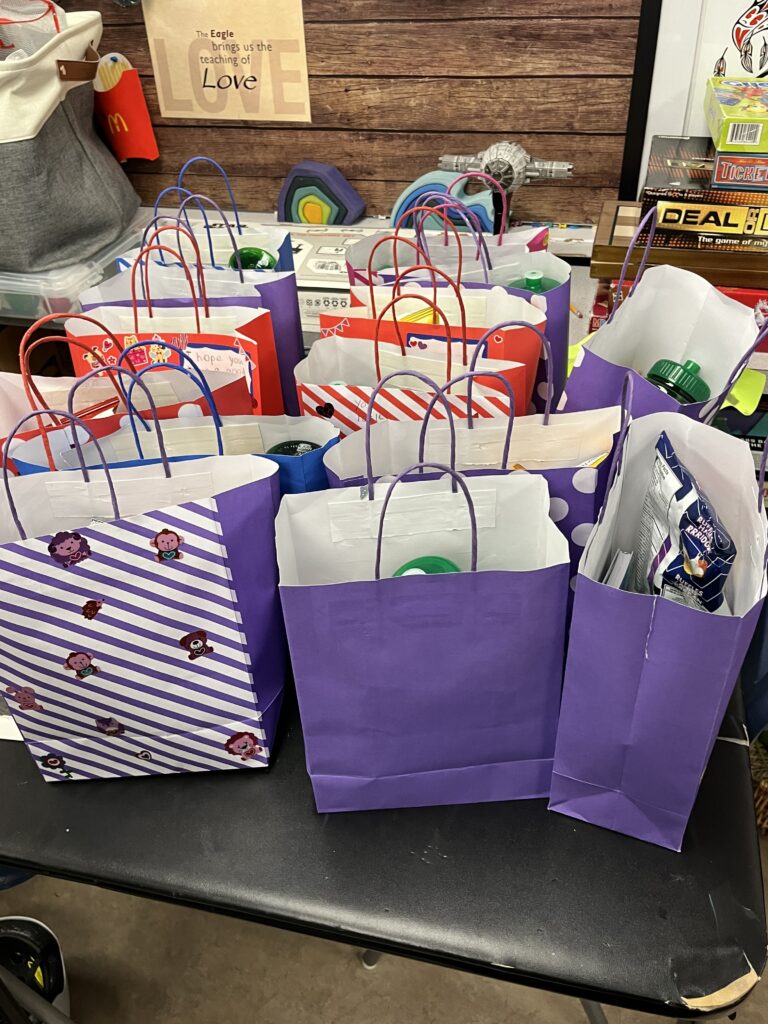Empowering Leadership: Final Day at Harwin Elementary
Our final day at Harwin Elementary marked the culmination of a three-linked lesson unit on leadership that my group and I co-created and facilitated. This final lesson shifted the focus from simply understanding leadership qualities to actively practicing them within the school community.
To bring this learning to life, we guided students in creating care bags to donate to the Spirit Den to support peers in need. This hands-on experience emphasized student agency and offered us meaningful insight into both motivation and the role of assessment in the classroom.
Lesson 3: Students as Leaders

In Lesson 1, students explored the characteristics of leadership. In Lesson 2, they reflected on which traits resonated with them personally. By Lesson 3, they embodied those traits in a tangible way. Students decorated care bags and carefully selected items from designated stations to fill them. This real-world application encouraged students to see themselves as leaders.
The Role of Self-Assessment and Reflection
After completing the care bags, we asked students to complete a self-assessment, encouraging them to reflect on:
- What they learned about leadership.
- How they felt participating in the activity.
- How they demonstrated the leadership traits explored in earlier lessons.
This reflection was central to our final assessment. It provided, qualitative insight into each student’s learning journey and helped us evaluate their growth by incorporating self-awareness, responsibility, and personal connection.
Motivation and Its Influence on Assessment
One of the biggest takeaways for my group and I was the inconsistency of student motivation. For instance, a student who had been highly engaged in Lesson 1 showed minimal participation by Lesson 3. Even though we knew this student’s capabilities, the drop in motivation highlighted the complex relationship between emotional well-being and classroom engagement. This reminded us that assessment can’t be separated from context. Students’ lives outside of school deeply affect their ability to participate and perform. It reinforced the need to approach assessment with compassion and flexibility.
Addressing Diverse Needs Through Differentiated Assessment
Throughout the three lessons, differentiation was key. We worked with students who had a wide range of learning needs, including autism, FASD, and other exceptionalities. Once again, collaborative group work was the most effective and inclusive strategy. By working in mixed-ability groups, students were able to contribute in ways that reflected their strengths. We witnessed beautiful moments of peer support, shared leadership, and mutual encouragement.
Lessons Learned and Future Considerations
The care bag project was meaningful and engaging, but it also brought an unexpected realization. Many of the students creating the care bags were themselves in need of the very items they were preparing for others. This realization gave the activity a deeper layer of significance and made me and my peers reflect on how leadership looks different depending on context. Moving forward, my group and I would consider adapting this unit when working in schools where students’ basic needs are more consistently met, to allow for a different kind of reflection around giving, service, and leadership.
Summative Assessment and Final Reporting

It was very challenging to create a summative assessment for this unit based on academic achievement. Instead, our assessment was rooted in the evidence collected (worksheets/activities) from each lesson and the students’ personal growth and reflection across all three lessons.
The final reflection activity served as the main source of summative data for lesson three. In it, students articulated what they had learned about leadership and how they saw themselves practicing those traits. This approach allowed us to assess learning in a holistic and student-centered way, one that aligned with our goals for this unit.
Concluding Thoughts
The experience at Harwin Elementary reminded my group and I that assessment must extend beyond academic checklists. It must consider students’ emotions, contexts, and motivations. When we prioritize relationships and reflection and meet the student where they are at, we create space for students to grow in ways that are authentic and empowering.